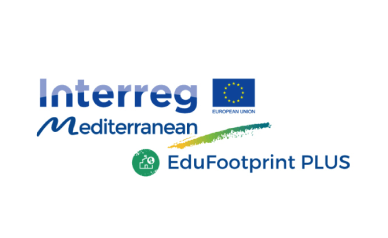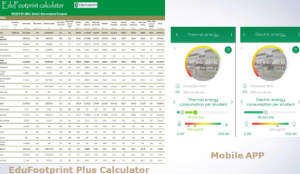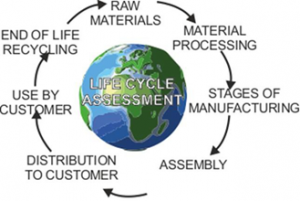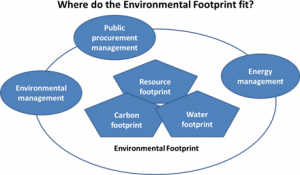
Call for Proposals
Obzorje 2020, LC-SC3-B4E-4-2020, Next-generation of Energy Performance Assessment and Certification.
Duration
01.03.2021 – 30.06.2022
Total Eligible Costs
€ 498.206,50
Project Website
Contact at IRI UL
General objective
The general objective of EduFootprint Plus project is to better manage, plan and monitor the energy consumption in public buildings in the Mediterranean area. Specifically, EduFootprint will reach this aim focusing on public buildings with an innovative Life Cycle Assessment (LCA) approach, considering not just direct energy impacts of buildings (consumption), but also indirect ones (public procurement or general human awareness and behaviour).
Aim
The main aim of EduFootprint Plus is to enhance the capacity of public authorities to calculate environmental footprint of activities in its buildings.
Transfer of knowledge between givers and receivers
- Givers will coach receivers through the e-support system to use EduFootprint calculator and APP in operation,
- Receivers will identify significant impact areas of public buildings and plan effective allocation of resources and time toward strategies to decrease harms to the environment and people.
WHAT IS THE LCA APPROACH?
The term “life cycle” refers to the major activities in the course of the product’s lifespan from its manufacture, use and maintenance, to its final disposal, including the raw material acquisition required to manufacture the product.
Simply stated, the life cycle of a product or service embraces all of the activities that go into making, transporting, using and disposing of that product or service. The typical life cycle consists of a series of stages starting from extraction of raw materials, through design and formulation, processing, manufacturing, packaging, distribution, use, re-use, recycling and, ultimately, to waste disposal.
Among the newer concepts about LCA there is the “Life cycle management” {LCM}, which is an integrated approach to minimizing environmental burdens throughout the life cycle of a product, system (organisation) or service. This approach is provided for EduFooprint project. A typical LCA- study consists of the stages showed in figure below.
ISO 14040:2006 describes the principles and framework for life cycle assessment (LCA) including: definition of the goal and scope of the LCA, the life cycle inventory analysis (LCI) phase, the life cycle impact assessment (LCIA) phase, the life cycle interpretation phase, reporting and critical review of the LCA, limitations of the LCA, the relationship between the LCA phases, and conditions for use of value choices and optional elements. ISO 14040:2006 covers life cycle assessment (LCA) studies and life cycle inventory (LCI) studies. It does not describe the LCA technique in detail, nor does it specify methodologies for the individual phases of the LCA.LCA is a decision support tool. Used in the right way, it can help to ensure that education building manager’s choices are environmentally oriented.
WHAT IS THE ENVIRONMENTAL FOOTPRINT?
The Environmental Footprint (EF) is a multi-criteria measure of the environmental performance of a good/service-providing organization from a life cycle approach. The design of this measure in EduFootprint project should be based on the Organization Environmental Footprint (OEF). The OEF is a method for modelling and quantifying the physical environmental impacts of the flows of material/energy, resulting emissions and waste streams associated with the Organizational activities from a supply-chain perspective (from extraction of raw materials, through use, to final waste management).
A life cycle approach takes into consideration the spectrum of resource flows and environmental interventions associated with a service or organization from a supply-chain perspective. It includes all stages of the product’s life cycle, from raw material acquisition through processing, distribution, use, and end-of-life processes. The OEF methodology is based on EU OEF guide (Recommendation 2013/79/EU).
Environmental footprint or carbon footprint?
Environmental footprint can be measured using the EduFootprint calculator. It tells how much resources are needed and the total measure of local and global pollution considering one student using the education service in that public building.
Carbon footprint is a type of footprint and it can be measured with EduFootprint calculator. It is measured in tonnes (or kilograms) of carbon dioxide per person. It tells us how much carbon dioxide is released by the fossil fuels that are burnt to give us energy (providing transport, heat and electricity to us directly, but also to make, transport and dispose of all the goods we consume).






